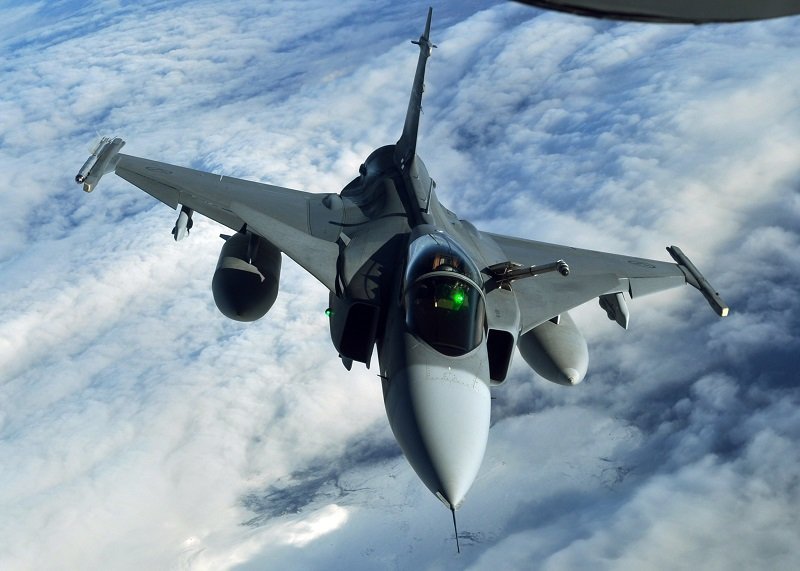Designed to replace the variants of the Saab 35 Viggen and Saab 37 Draken combat aircraft, Sweden’s JAS 39 Gripen was first flown in December 1988 and entered operational service with the Swedish Air Force in 1997. Developed as part of a joint effort by an industrial consortium that consisted of Saab, Saab Microwave Systems (formerly Ericsson), Volvo Aero Corporation, Saab Avitronics and FFV Aerotech, the Gripen was the first Swedish multirole combat aircraft – capable of conducting interception, ground-attack, and reconnaissance.
The fourth-generation fighter is a highly-advanced aerial platform that was developed with the latest in digital controls and weapons delivery, while also being produced as a sleek fighter to meet the strict demands of the Swedish Air Force.
History
The origins of the Saab JAS 39 Gripen (Griffen) date back to the late 1970s when the government in Stockholm began to explore the development of an aircraft that could be capable of fighter, attack and recon missions. After evaluating a number of existing foreign aircraft including the American F-16 and F-18 fighters, the Swedish Parliament decided in June 1982 to move forward with the Swedish project. A contract was signed between the Saab-led consortium and the Defence Material Administration to develop the new aircraft.

A Swedish JAS-39 Gripen returns to the play areas of the Arctic Challenge exercise Sept. 24, 2013, over Norway, after taking on fuel from a U.S. Air Force KC-135R Stratotanker. The JAS-39, in coordination with aircraft from other nations, formed a Blue assault force, which had to bypass or neutralize an opposing Red force attempting to stop them from an overall objective outlined in the day’s scenario. (U.S. Air Force photo by 1st Lt. Christopher Mesnard/Released)
The single-engine, multirole-combat aircraft was designed with a single pilot, but the B and D versions were also developed featuring a longer canopy for a crew of two. Since being introduced in 1997, a total of 204 aircraft in three batches had been ordered by Swedish Air Forces, which to date has taken delivery of 74 aircraft. A total of 158 Gripens were produced as of 2016, and it was exported around to the globe.
Current operators include Brazil, the Czech Republic, Hungary, South Africa and Thailand, while the United Kingdom’s Empire Test Pilots’ School operates Gripens in a training capacity.
Tech
The JAS 39A was the primary single-seater version, with the JAS 39B being the operational trainer variant – and it was equipped with the same avionics and weapons suite as the JAS 39A, with the exception of the gun system. The JAS 39C was developed as the single-seat batch 3 variant and export version; and it offered color cockpit display, on-board oxygen generation system (OBOGS) as well as in-flight refueling capability. The JAS 39D was the two-seater variant with the same advanced features as the 39C version.
The aircraft was powered by Volvo RM12 afterburning turbofan engine, 54 kN (12,000 lbf) thrust dry, 80.5 kN (18,100 lbf) with afterburner. It has a maximum speed of Mach 2, a combat range of 800 km, and a service ceiling of 15,240 meters. Armament included a 27 mm Mauser BK-27 revolver cannon with 120 rounds (in the single-seat versions), while there were eight hardpoints including two under the fuselage, two under, and one on the tip of each wing. The Gripen could be armed with a variety of missiles including anti-ship as well as laser-guided bombs.
Saab also developed the Gripen E-series, which features a new and more powerful engine, improved range performance, and the ability to carry greater payloads. It features a new AESA-radar, Infrared Search and Track System (IRST), highly advanced electronic warfare and communication systems together with superior situational awareness. As described by Saab, “The E-series redefines airpower for the 21st century by extending operational capabilities.”





